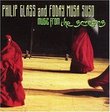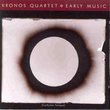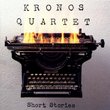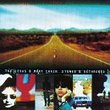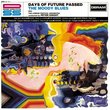| All Artists: Toru Takemitsu, Nexus, Pacific Symphony Orchestra Title: Toru Takemitsu: From me flows what you call Time; Twill by Twilight; Requiem Members Wishing: 1 Total Copies: 0 Label: Sony Release Date: 2/24/1998 Genre: Classical Styles: Forms & Genres, Concertos, Historical Periods, Modern, 20th, & 21st Century Number of Discs: 1 SwapaCD Credits: 1 UPC: 074646304426 |
Search - Toru Takemitsu, Nexus, Pacific Symphony Orchestra :: Toru Takemitsu: From me flows what you call Time; Twill by Twilight; Requiem
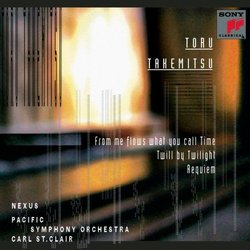 | Toru Takemitsu, Nexus, Pacific Symphony Orchestra Toru Takemitsu: From me flows what you call Time; Twill by Twilight; Requiem Genre: Classical
Takemitsu (1930-96) is Japan's greatest composer. He had a diverse musical career, which included work for films. His music partakes of aspects of postmodernism--serial construction, atonal modalities, unusual instrumentat... more » |
Larger Image |
CD DetailsSynopsis
Amazon.com Takemitsu (1930-96) is Japan's greatest composer. He had a diverse musical career, which included work for films. His music partakes of aspects of postmodernism--serial construction, atonal modalities, unusual instrumentation--and all of it hypnotic. The works on this disc are for a chamber-size orchestra and are illuminated by the smaller forces. From Me Flows What You Call Time (1990) brings to mind a set of delicate, atonal wind chimes. Twill by Twilight--In Memory of Morton Feldman (1988) reflects Feldman's juxtapositions and separations, but with a bit more color. Requiem (1957), Takemitsu's first orchestral work, is stunning and very beautiful. --Paul Cook Similarly Requested CDs
|
CD ReviewsJust about perfect Moses Alexander | Alabama, USA | 08/23/2001 (5 out of 5 stars) ""From Me Flows What You Call Time" is one of the greatest pieces written in the late 20th century. The funny thing is that its hard to put a finger on why. This is some of the most original music you've ever heard. This literally sounds like nothing else I've ever heard. It is essentially a concerto for percussion quintet and it is fabulous what Takemitsu has done with the idea. Normally, a concerto for five percussionists would be bombastic and thunderous, but this is subtle & understated, but that's where the strength lies. The Pacific Orchestra provides a solid backing for the percussion. The percussion pretty much never ceases, the orchestra provides splashes & washes of color with flutes, occassional horn bursts, and lush strings. Its is shocking just how pretty & beautiful Takemitsu was able to make music with dissonance. The whole piece isn't that way, but sometimes you will hear something that doesn't quite sound right, but its still beautiful. He's the perfector of soft dissonance. I know the comparison has been run into the ground, but there is a lot of Debussy in Takemitsu, although he's more modern and has an obvious slant from the East. His music doesn't sound like Debussy's, you can just see the influence. Believe me, Takemitsu's is truly a unique voice in music."Twill by Twilight" (for orchestra) is in memory of Morton Feldman, and I must say I think its better than anything I've heard by Morton Feldman."Requiem" (for string orchestra) is also a nice piece, but the real showstopper on this disc is "From Me Flows What You Call Time." Get the disc for that." Haunting and Exotic Christopher Forbes | Brooklyn,, NY | 03/20/2003 (4 out of 5 stars) "I've had this record for quite a while now. It's taken some time but the music has really grown on me. The surface glitter of the pieces is immediately apparent. What is not so obvious on first hearing is the profundity of the musical and spiritual thought in these works. Toru Takemitsu was Japan's foremost composer in the late 20th century, and yet his music rarely sounds blatantly Japanese. The only obvious traditional influences on this CD come at the very beginning of the first piece, Through Me Flows What You Call Time. This work opens with a flute solo that contains techniques from the shakuhatchi repertoire. But quickly, the material of this solo becomes more western, sharing with Messiaen a love of symmetrical scales and modal devices. The piece uses this first flute solo as the spring board to a thirty five minute concerto grosso for orchestra and percussion ensemble. The music is lush, very romantic and colorful. The tonal language reminds me of a mix of Debussy, Scriabin and Messiaen. The melodic material is based primarily on a five note motif from the beginning of the flute solo which morphs into myriad forms. The percussion writing is exquisite...dominated by flashes of bell and cymbal color as well as ostinati on the marimba and outbursts from steel drums. The orchestra lends support mostly, occasionally singing out in an almost chorale-like texture. This piece is absolutely lovely. The second work on the CD is Twill by Twilight. The work seems almost a carbon copy of Time except that it doesn't include the percussion group. While I find nothing particularly objectionable about the work, it isn't distinct enough to compete with the impression made by the first work. In fact...another choice for the CD might have been in order. There gets to be a monotonous quality by the end of this work. The CD is rounded out by Takemitsu's first piece to make an international spalsh...Requiem for String Orchestra. This piece is more Bergian than the others, though it too is accessible and shaded with tonal moments. It is deeply felt and a quite moving work. Takemitsu was an enormously popular person as a composer. Any musician who knew him has only great things to say about him. This greatness of spirit comes through in the best of his music. Time and Requiem are among the finest neo-romantic pieces around. If you like Debussy, or Rautavaara, you will certainly love these pieces. Highly recommended." Beautiful music Astral Traveler | Englewood, CO | 06/06/2001 (5 out of 5 stars) "I'm a big admirer of Takemitsu, but mostly on account of his film music. While I've enjoyed his classical pieces, I've always appreciated the rawness and experimentation of his film work more. "From Me Flows What You Call Time" is the big exception... it's a truly mesmerizing piece. Like the best Takemitsu music, it can take you into another world. Frankly I don't have words to describe how wonderful this piece is. You just need to listen to it."
|

 Track Listings (3) - Disc #1
Track Listings (3) - Disc #1